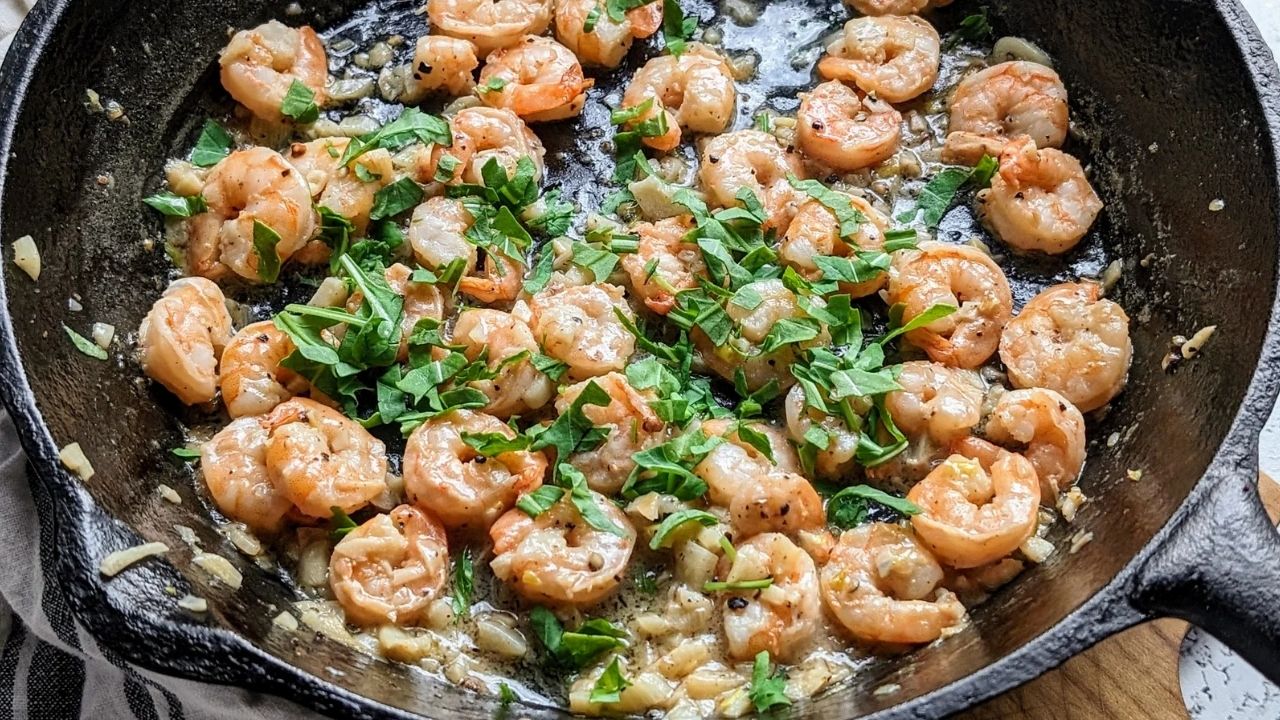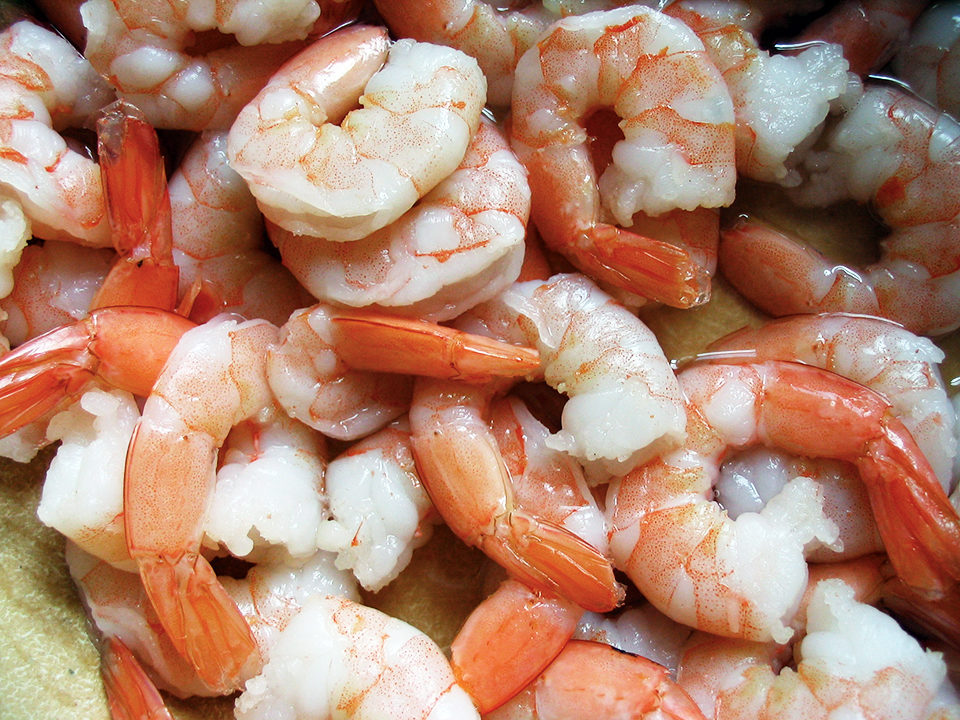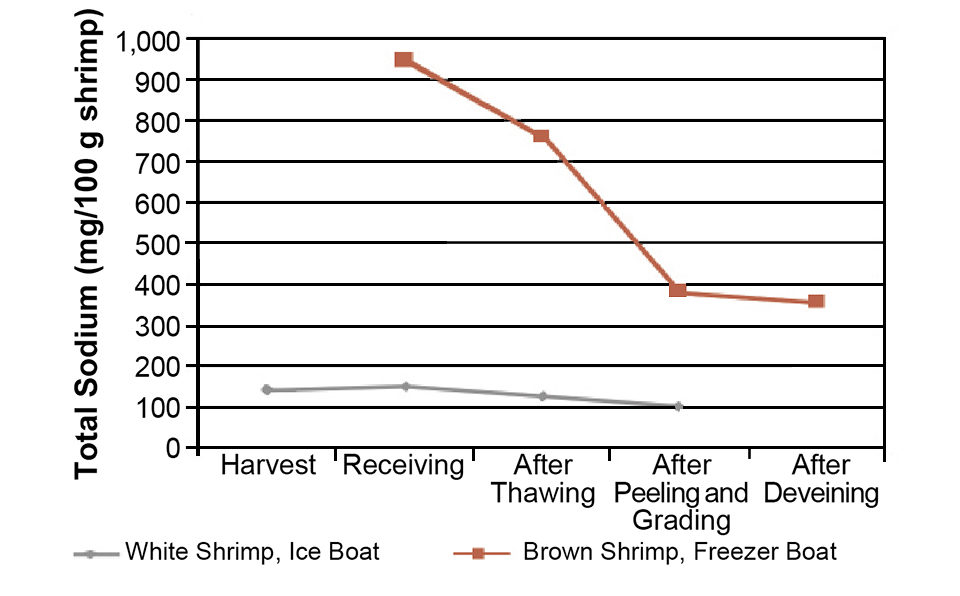Look I know you love shrimp – who doesn’t? Those tender, sweet little morsels are absolutely delicious. But if you’re watching your sodium intake like many of us are these days, you might be wondering whether shrimp is actually a good choice. Let me break down everything you need to know about shrimp and sodium content, based on my years of culinary research and experience.
The Quick Answer
Nope, shrimp isn’t exactly low in sodium – but it’s complicated! While natural, unprocessed shrimp contains relatively modest amounts of sodium (about 100-200mg per 3-ounce serving), most shrimp we buy has significantly more sodium due to processing methods.
Natural Sodium Content vs. Added Sodium
Here’s what you really need to know about sodium levels in different types of shrimp
Fresh, Unprocessed Shrimp:
- Natural sodium content: ~100mg per 3oz serving
- Percentage of daily value: Only 4% of recommended daily intake
- Best choice for low-sodium diets
Frozen Processed Shrimp
- Sodium content: 245-730mg per 4oz serving
- Main source: Added sodium tripolyphosphate (STPP)
- Can contain up to 32% of daily sodium allowance
Pre-Cooked Shrimp:
- Sodium content: Up to 800mg per 3oz serving
- Often highest in sodium due to processing
- May contain added seasonings and preservatives
Why Is Processed Shrimp Higher in Sodium?
I’ve found that many folks don’t realize why processed shrimp contains more sodium. Here’s the deal:
-
Preservation: Manufacturers add sodium-based preservatives (like STPP) to:
- Extend shelf life
- Maintain moisture
- Prevent discoloration
-
Processing Methods: Additional sodium comes from:
- Brining solutions
- Anti-bacterial treatments
- Flavor enhancers
How to Choose Lower-Sodium Shrimp Options
Y’all don’t need to give up shrimp entirely! Here are my tried-and-true tips for keeping sodium levels in check:
Best Choices:
- Fresh-caught wild shrimp
- Raw, unfrozen shrimp
- Shrimp labeled “no added phosphates”
- Unprocessed frozen shrimp
Watch Out For:
- Pre-cooked cocktail shrimp
- Breaded shrimp
- Seasoned frozen shrimp
- Canned shrimp
Practical Tips for Reducing Sodium When Preparing Shrimp
-
Rinse Before Cooking
- Can reduce surface sodium
- Removes some processing agents
- Takes just 30 seconds under cool water
-
Skip the Salt When Cooking
- Use fresh herbs instead
- Try citrus for flavor
- Experiment with garlic and spices
-
Check Labels Carefully
- Look for “no added phosphates”
- Compare brands
- Read serving sizes
Low-Sodium Shrimp Recipe Ideas
Here’s one of my fave low-sodium shrimp preparations:
Simple Herb-Grilled Shrimp
- Fresh shrimp
- Olive oil
- Lemon juice
- Fresh herbs (basil, parsley)
- Garlic
- Black pepper
No added salt needed – the natural flavors shine through!
Health Considerations
Who Should Watch Shrimp Sodium Intake:
- People with high blood pressure
- Those on sodium-restricted diets
- Heart disease patients
- Individuals with kidney problems
Daily Sodium Guidelines:
- Recommended limit: 2,300mg per day
- Ideal limit for at-risk groups: 1,500mg per day
- One serving of processed shrimp can use up to 1/3 of daily allowance
The Bottom Line
While natural shrimp isn’t particularly high in sodium, the processing methods used in most commercial shrimp products significantly increase the sodium content. But don’t worry – you can still enjoy shrimp as part of a healthy diet by choosing fresh or minimally processed options and preparing them thoughtfully at home.
Remember: The key isn’t to completely avoid shrimp, but to make informed choices about which types you buy and how you prepare them. By following the tips I’ve shared, you can keep enjoying this delicious seafood while managing your sodium intake.
Quick Reference Table
| Type of Shrimp | Sodium Content (per 3oz) | % Daily Value |
|---|---|---|
| Fresh/Raw | 100-200mg | 4-9% |
| Frozen | 245-730mg | 11-32% |
| Pre-cooked | Up to 800mg | Up to 35% |
| Canned | 300-500mg | 13-22% |
Now you’re armed with all the info you need to make smart choices about shrimp and sodium! Got any questions? Drop ’em in the comments below – I’m always happy to help fellow seafood lovers make healthier choices!

Garrido, Sodium content in typical moisture-retention agent ingredients, Table 2
| Ingredient | Sodium Content |
|---|---|
| Salt | 39% |
| Sodium bicarbonate | 27% |
| Sodium citrate | 27% |
| Sodium carbonate | 44% |
| Sodium tripolyphosphate | 31% |
| Typical phosphate blend | 30% |
Few samples correctly report the amount of sodium in the nutrition facts panel

For centuries, salt has played an important role in the preservation and flavor enhancement of many food products, including all seafood. The ions that form salt, or sodium chloride, are an essential part of the human diet, regulating water balance and maintaining fluid volume in the liquids surrounding cells. Nevertheless, diets high in sodium are known to increase blood pressure, which can lead to heart disease and stroke, two leading causes of death.
Although media coverage and physicians have made consumers aware of the health implications of diets high in sodium, and the food industry has invested billions of dollars on required labeling for nutrition facts that recommend consumers not have over 2,400 mg sodium per day, the American Heart Association reported earlier this year that the average American still consumes 6,000-18,000 mg sodium daily.
Regulatory agencies, health care professionals and consumer groups in the U.S. are concerned with this fact. The Food and Drug Administration (FDA) may change the regulatory status of salt and sodium, and establish additional food-labeling requirements for levels of sodium in the final product. The daily recommended intake value of sodium is also being revised.
Likewise, European legislators have encouraged the food industry to reduce the sodium content of all foods since 2006. Although United Kingdom consumers’ daily salt consumption has fallen from 3,800 to 3,440 mg sodium, the U.K. Food Standards Agency is is contemplating to make the voluntary industry salt reduction program stricter in order to reduce salt intake to 6,000 mg per day.
Sodium is a natural component of all seafood. Shrimp, for example, when harvested can have 250 to 300 mg sodium per 100 grams of meat. When shrimp are stored in ice slush in accordance with good manufacturing practices, the level of sodium begins to decrease due to two factors: an increase in moisture in the product and leaching of sodium into the ice slush. If the product is frozen in salt brine prior to processing, the sodium levels in the edible meat can temporarily increase but eventually decrease when the product is thawed and further processed (Fig. 1).

Another source of sodium in shrimp can be the use of salt and/or moisture-retention agents (MRAs) during processing. Since the 1960s, phosphates – a group of additives generally recognized as safe (GRAS) – have been the moisture-retention agent of choice by shrimp processors.
Phosphates are natural components of shrimp and seafood that are involved in providing energy to the muscles. After death, there is a depletion of phosphates, but the addition of phosphates through treatments restores the moisture-binding capacity of the proteins.
It has been documented that phosphates used in conjunction with salt have a synergistic performance, which has led to the addition of salt to phosphate treatments worldwide. In addition, the presence of salt can enhance product flavor.
Proper applications of phosphates and/or salt can result in added sodium of 50 to 250 mg sodium per 100 grams of shrimp meat. Prolonged exposures or higher concentrations result in higher sodium additions.
Best TIPS for a LOW SODIUM DIET
FAQ
Can I have shrimp on a low sodium diet?
For example, while shrimp contain high levels of protein, their saltwater habitat can contribute to high sodium levels. Fresh-caught shrimp are also soaked in a salty brine to reduce their temperature and prevent ice crystals from forming during the freezing process, which adds to the sodium levels.
What seafood is low in sodium?
Many fish and some shellfish are naturally low in sodium. Examples include cod, salmon, tuna, halibut, and flounder.
Is shrimp ok for high blood pressure?
Is shrimp have a lot of sodium?
In the cooked products, the levels ranged 100 to 612 mg sodium per 85-gram serving – equivalent to 4 to 25 percent of the recommended daily intake.Sep 1, 2008
